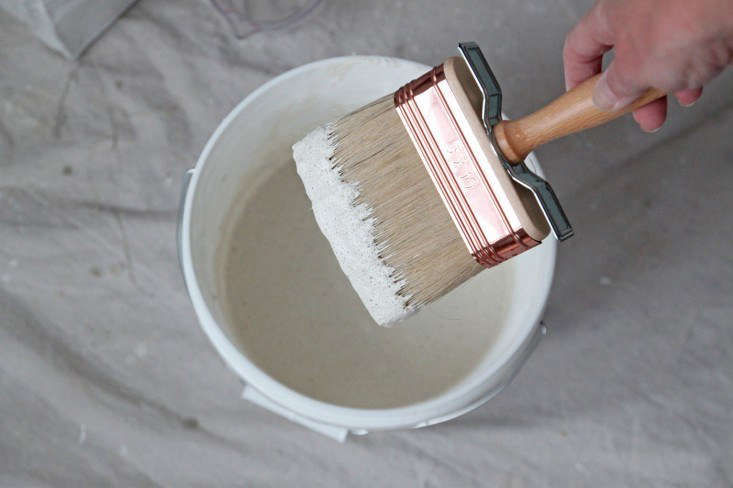

Using lime plaster provides several benefits, including: Breathability: Lime plaster allows moisture to evaporate, preventing trapped moisture and potential mold or dampness issues.
Using lime plaster provides several benefits, including: Breathability: Lime plaster allows moisture to evaporate, preventing trapped moisture and potential mold or dampness issues.
Photography courtesy of Domingue Architectural Finishes.
Photography courtesy of Domingue Architectural Finishes.
Flexibility: Lime plaster is more flexible than other plaster types, making it suitable for historic or older buildings that may experience slight movement. It is important to understand the appropriate consistency, drying times, and techniques for applying and smoothing the plaster.
Hiring a professional lime plaster contractor or seeking expert advice is recommended for best results. The company specializes in lime plasters and washes (depending on the amount of water added), which have long been used to add depth and character to walls with relative ease.
Buildings were painted with lime plaster to ward off infection during a cholera outbreak.
1. Instantly upgrade stairs.
1. Instantly upgrade stairs.
One place lime plaster can be used?
A room fully done in plaster.
2. Think small.
2. Think small.
No need to commit to a full project with lime plaster.
3. Apply over brick.
3. Apply over brick.
Want to use lime plaster but don’t have a plain wall to use it on?
No problem: a slurry (“simply a mix that contains more water, enough that the mixture, the consistency of pancake batter, can be applied with a brush instead of a trowel,” the Domingue team says) can be applied over bricks and other uneven surfaces.
The same applies to stone walls, fireplaces, or detailing.
4. Camouflage stone.
4. Camouflage stone.
5. Play with texture.
5. Play with texture.
When applying lime plaster or wash, embrace imperfection—and wield tools differently for a wide variety of effects.
6. For a lighter effect, try limewash.
“Plaster lends gravitas to a wall, along with texture—from subtle to dramatic,” the Domingue team says.
Photograph courtesy of The Modern House.
Lime wash makes a textural backdrop to a wood stove, as seen in A Tale of Two Styles: Proper Victorian on the Outside, Modern Zen on the Inside.
7. Create a backdrop for a wood stove.
Photography by Dustin Aksland, courtesy of Elizabeth Roberts, from A Warm, Minimalist Duplex in Brooklyn by Architect Elizabeth Roberts.
Lime makes a textural finish for the fireplace.
8. Or a fireplace surround.
The material can be used to add character to exteriors and facades, too.
9. Take it outside.
9. Take it outside.
Here, Domingue says, “lime plaster slurry utterly altered the look and feel of a formerly red-brick house. The exterior coloration shifted from high contrast to far more subtle, with the lime plaster slurry dressing the house in an elegant coat that suits its formal architecture.”
For more on how to apply limewash at home, see DIY Project: Limewashed Walls for Modern Times.
Photograph by Justine Hand for Remodelista.
Photograph by Justine Hand for Remodelista.
What is lime plaster?
What is lime plaster?
Lime plaster is a traditional building material made from lime, sand, and water.

